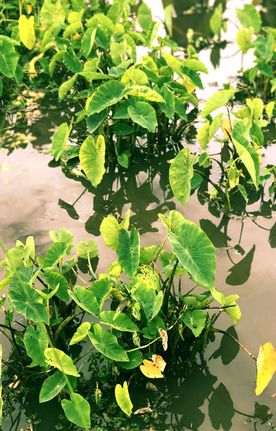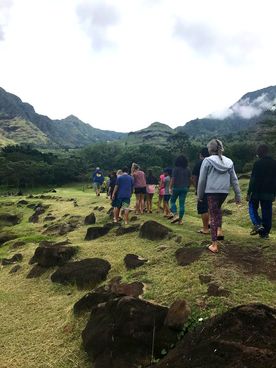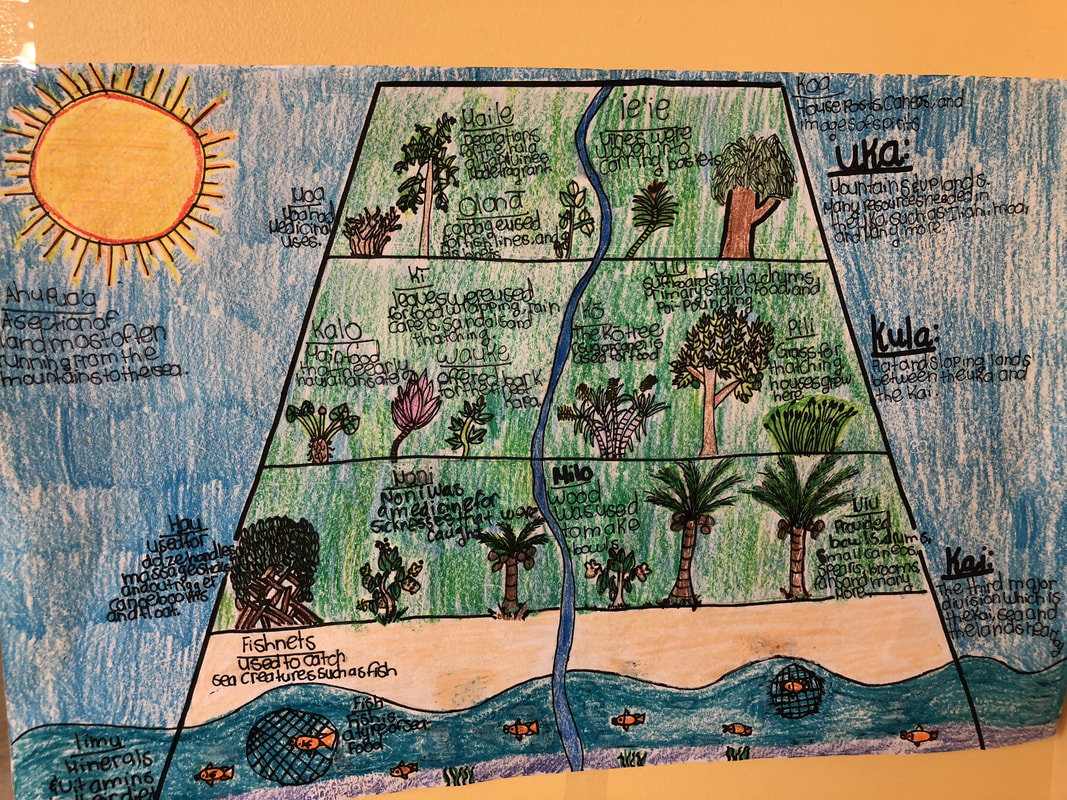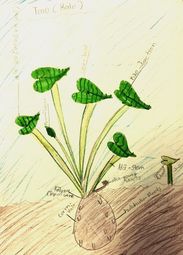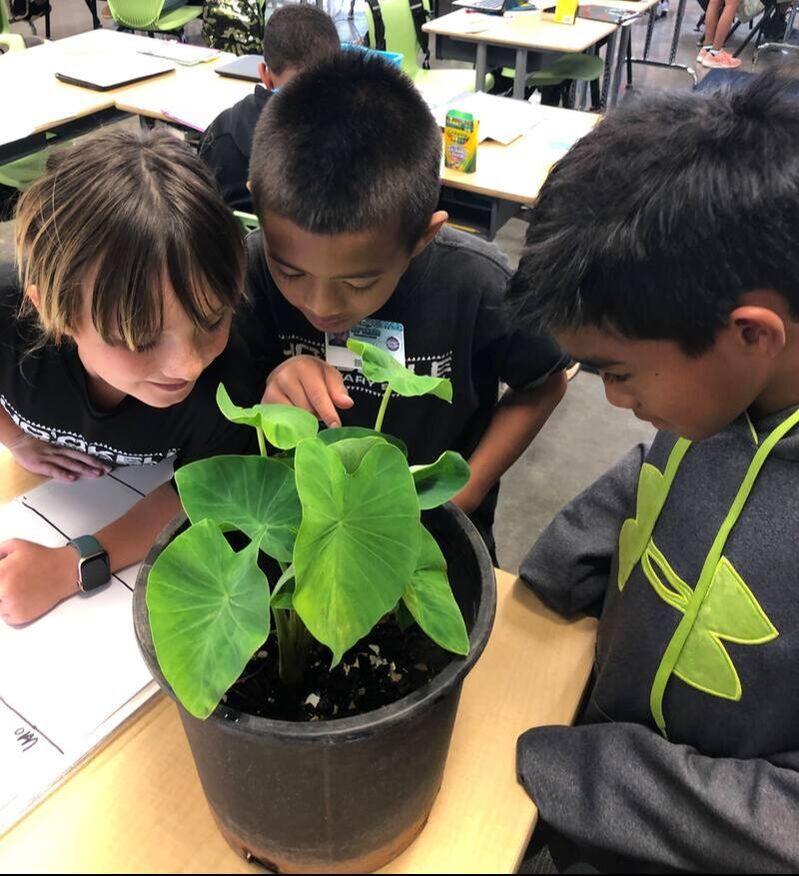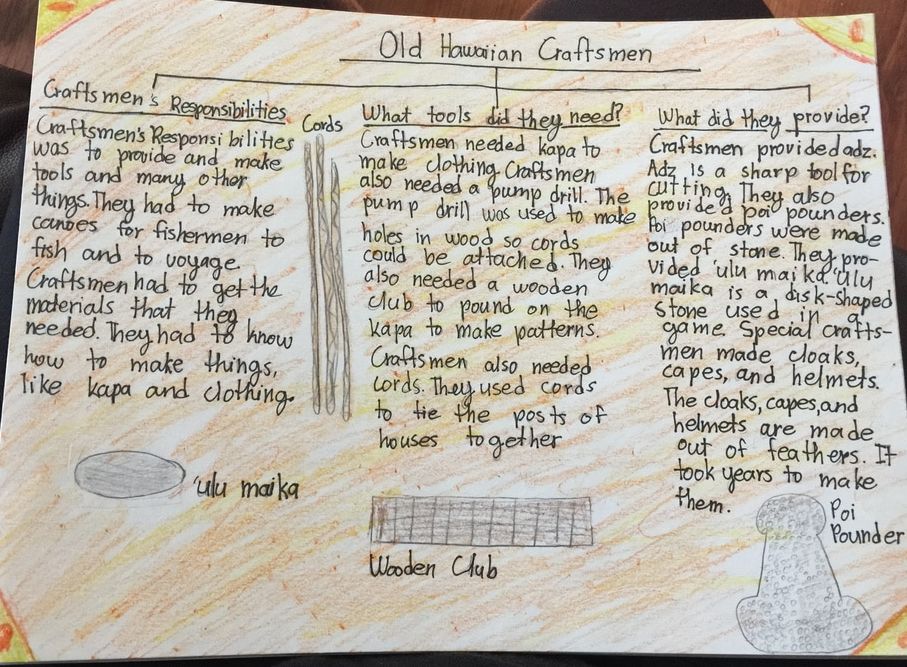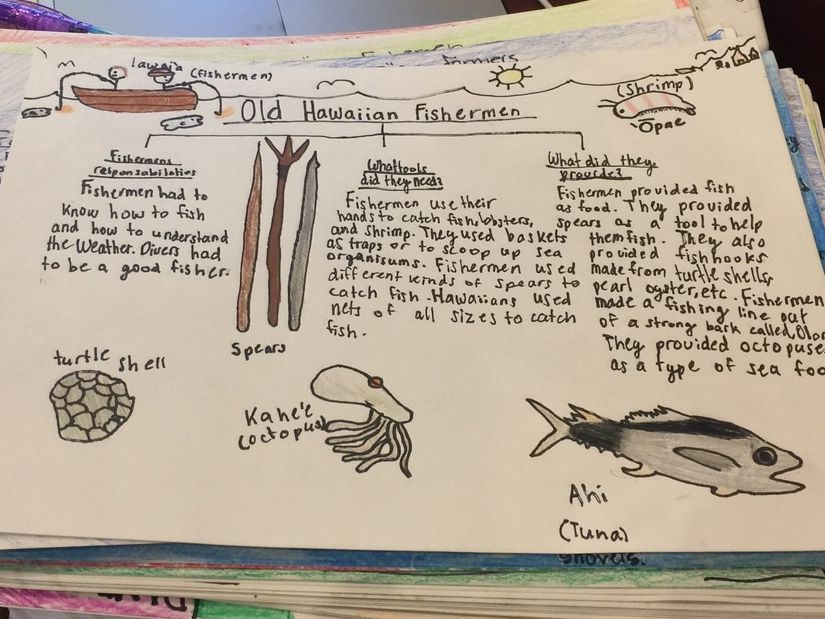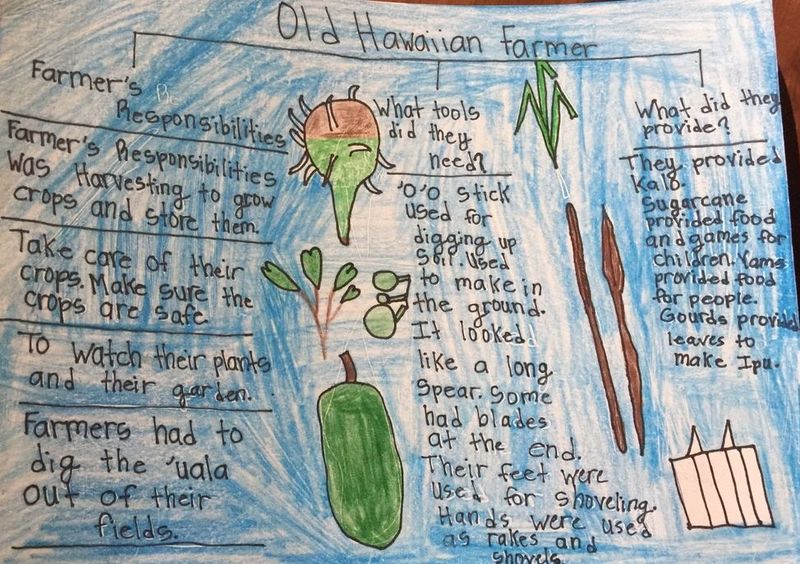|
4th graders get the opportunity to learn and experience ancient Hawaiian practices through field trips, project based learning (PBL) projects, and activities.
One of the highlight field trips take place at an authentic lo'i kalo (taro patch) of an ahupua'a. Students learn about the different resources found on that ahupua'a and how to properly care for them using traditional techniques. The students have a great muddy time getting the hands-on experience of cleaning out the weeds from the lo'i kalo. They also learn about the importance and the history of the land. This is definitely one of the most memorable field trips! |
Resources of the Uka,
|
Classes of pre contact
|
|
Students learned about the division of the Hawaiian Islands. Different types of resources were found at different sections of an ahupua'a. They read about the different foods and plants, and drew them on their own mountain.
|
Not only did the children learn about land division, they also learned that the people were also divided by the Ali'i. There were 3 different classes: the Ali'i, Maka'ainana, and the Kaua. The Maka'ainana were working class. They created their own interdependent system that allowed them to live and build their economy.
|
Kapu systems of Old HawaiiSince learning about the different resources and different classes amongst the people of Old Hawaii, students began to learn about rules and laws that were considered Kapu.
Significance of the Kalo Plant The students learn about the legend of Papahanaumoku & Wakea and Haloa. Within these legends lies the significance of different kapu systems and the Kalo plant. We know that the ancient Hawaiians believed that Haloanakaukapalili's older brother, Haloa, grew to be the first Hawaiian man. Thus, the kalo plant represents a Hawaiian ancestor and was utilized in many different ways, especially as their staple crop.
|
